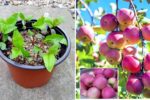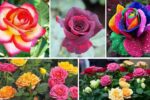Join on WhatsApp
Get the latest updates directly on WhatsApp – motivation, news & more!
A garden should delight all the senses sight, sound, touch, taste, and especially smell. While color and shape often take center stage in landscape design, fragrance adds a whole new dimension. The right scented plants can transform your garden into a peaceful, memory-evoking retreat that draws you in and makes you want to stay.
Whether you’re designing a quiet corner for reflection or planting near a patio where scent can drift in on warm breezes, including fragrant plants is one of the easiest and most natural ways to create atmosphere. Below, you’ll find a carefully curated list of the best scented plants to grow, from classics to lesser-known gems.
Lavender
Lavender is one of the most popular scented plants in the world, and for good reason. Its sweet, herbal fragrance is instantly recognizable and widely loved. It thrives in full sun and well-drained soil, making it perfect for garden borders, walkways, or pots.
The scent of lavender is known for its calming effect, so it’s ideal for planting near seating areas or bedroom windows. In addition to its fragrance, lavender also attracts pollinators like bees and butterflies.
Gardenia
If you’ve ever caught the creamy, heady scent of a gardenia in full bloom, you’ll know it’s unforgettable. This tropical shrub prefers warm climates, partial shade, and slightly acidic soil. The glossy green leaves and pure white flowers make it a showstopper in any garden.
Though it can be a bit fussy to grow, the intoxicating scent makes it worth the effort. Gardenias are perfect near patios or entryways where their perfume can greet you each time you pass.
Jasmine
Jasmine has one of the most exotic and romantic fragrances you can grow. Depending on the variety, jasmine can be a vining climber or a compact shrub. The small, star-like white or yellow flowers release their scent primarily in the evening, making jasmine an ideal addition to moon gardens or outdoor spaces where you spend time after dusk.
Choose a sunny, sheltered spot for jasmine to thrive, and enjoy the nighttime fragrance that lingers in the air.
Roses
Not all roses are fragrant, but the ones that are can fill your garden with a deeply nostalgic aroma. English roses, Damask roses, and Bourbon roses are among the most perfumed varieties.
Planting roses requires some attention to sunlight, soil, and pruning, but the reward is a classic scent that ranges from fruity to musky to spicy. Place them along garden paths or near seating areas so you can enjoy the fragrance as you move through the space.
Sweet Alyssum
This low-growing flower may be small, but it packs a powerful honey-like scent. Sweet alyssum is ideal for edging, rock gardens, or hanging baskets. It thrives in cooler weather and can bloom all season in mild climates.
The scent is especially noticeable in the early morning or at dusk, and it attracts pollinators while gently perfuming the garden floor.
Honeysuckle
Honeysuckle vines bring a nostalgic, country-garden feel with their sweet, nectar-filled blooms. This climbing plant grows vigorously and can cover fences, arbors, and trellises in a single season.
The fragrance is strongest at dusk and often attracts hummingbirds and butterflies. Choose native varieties if possible, as some types can become invasive depending on your region.
Lily of the Valley
Don’t let its small stature fool you Lily of the Valley has one of the most beloved floral fragrances in the plant world. The bell-shaped white flowers appear in spring and emit a clean, fresh scent that is often used in perfumes.
This plant prefers shady areas and moist soil, making it perfect for planting under trees or in woodland-style gardens. Keep in mind that it spreads quickly, so give it room to grow or contain it with barriers.
Peonies
Peonies are cherished for their large, lush blooms and their sweet, almost rosy fragrance. Available in a range of colors from soft pastels to deep reds, they bring both visual and olfactory appeal to the garden.
Plant peonies in full sun with well-drained soil, and be patient they may take a few seasons to establish, but the long-lived rewards are well worth the wait. Their scent varies from light and fruity to rich and spicy depending on the variety.
Mock Orange
Mock orange is a deciduous shrub with white blossoms that smell remarkably like citrus blossoms hence the name. Its scent is fresh, clean, and slightly fruity, making it a popular choice for sensory gardens.
This plant does best in full sun to partial shade and can grow quite large, so give it space. Use it as a fragrant hedge or backdrop in your garden design.
Nicotiana
Also known as flowering tobacco, nicotiana produces trumpet-shaped blooms that give off a sweet, clove-like fragrance in the evening. It’s a great addition to gardens designed for twilight enjoyment.
Nicotiana grows well in containers or flower beds and comes in a variety of soft colors, including white, pale green, and pink. It prefers full sun to partial shade and regular watering.
Heliotrope
Heliotrope’s deep purple or violet blooms give off a sweet scent often described as cherry pie or vanilla. It’s a favorite in cottage gardens and pairs well with other soft, romantic plants.
This plant prefers sun and fertile, well-draining soil. It works well in containers or borders, where its fragrance can be enjoyed up close.
Dianthus
Also known as pinks or sweet William, dianthus has a spicy-sweet fragrance reminiscent of cloves. The delicate fringed flowers come in a variety of shades and patterns, making them visually appealing as well.
These hardy perennials thrive in full sun and well-drained soil. Plant them near walkways or in window boxes where their unique scent can be appreciated daily.
Scented Geraniums
Scented geraniums are grown more for their aromatic leaves than for their flowers. Available in a wide range of scents including lemon, rose, mint, and even chocolate these plants release fragrance when their leaves are touched or crushed.
Perfect for container gardens or herb borders, they love sun and dry conditions. They’re easy to care for and can be brought indoors during colder months.
Creating a Scented Garden Experience
When planning your fragrant garden, consider more than just plant selection. Scent can be affected by time of day, temperature, and wind direction. Place highly fragrant plants near seating areas, windows, or along pathways for the greatest impact.
Try to stagger bloom times so you have fragrance throughout the growing season. Combining daytime and evening-scented plants ensures that your garden always has something to offer, no matter the hour.
A well-designed scented garden offers more than beauty it evokes memories, lifts the spirit, and invites relaxation. Whether you favor floral, herbal, spicy, or citrusy notes, there’s a plant out there waiting to perfume your garden naturally.




